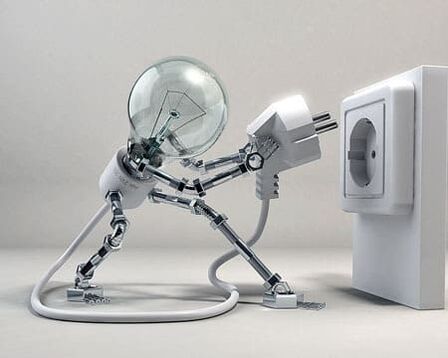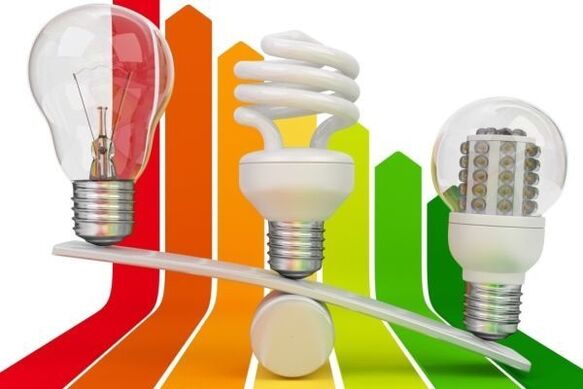
Energy carrier prices are rising regularly, so the question of how to save electricity at home is becoming increasingly relevant. It should be noted that if about ten or fifteen years ago the average family of three did not really think about it, because the cost of utilities did not consume the largest part of the budget, now the situation has changed dramatically.
At the same time, using all modern possibilities for energy saving, absolutely no need to use dim light, refuse to turn on the necessary devices and "turn back" the meter readings, which threatens violators with impressive fines. It is important to recognize and take lightly the need to save money and adhere to these principles in a way that is very accessible to each of us.
Today on the agenda - how and how much you can save on electricity. We all sometimes ask ourselves the question - "Do I pay a lot for lighting (or electricity)? Is it possible to reduce this payment? " But as a rule, the matter does not go further than conversation. But really, not everything is so scary and difficult. Try using the rules described below (or at least some of them) and you’ll immediately notice the difference.
There are two ways to reduce your electricity bill:
- change our behavior a little
- we use modern energy saving technology
In the first case, everything will depend only on us, i. e. adhering to certain rules will reduce energy costs. The second method involves investing in the purchase of equipment and devices that can significantly reduce electricity consumption. But. . . . . after investing once, you can relax, the technique will do everything for you. And in most cases, the cost is paid within a year.
If we turn to statistics, then the estimated cost in the average apartment of electricity is distributed as follows:
- 25% - electric stove, kettle, microwave and other kitchen appliances
- 21% - refrigerator
- 20% - lighting
- 9% - washing machine, dishwasher
- 11% TV, computer
- 14% - others
Using this data, you can roughly calculate the amount and the amount you can start saving. Before starting, I advise you to write down how much energy you use each month. For what? This will allow you to understand the amount you are actually saving by using a particular method. The results will be visible immediately, and this will give you an extra incentive.
Let's start saving energy:
Turn off the lights when you go
Everyone knows that expression, just. . . . . for some reason we don't use it at home. In vain, this is the easiest and most affordable way to save energy. Make it a rule to turn off the lights when you leave the room. Courts can also be linked like a functioning TV. Such "excess" causes us to cost about 30% of all lighting costs.
Energy saving lamps
Old incandescent lamps use 100 watts, energy savings - 20 watts. Saves energy consumption by 5 times. Now popular LED lights with a power of 5 watts. Of course, it’s more expensive than both, but with the same lighting brightness, it uses MUCH less energy and lasts longer. Don't skimp on buying. The main thing is to choose those that have a large guarantee - about 2 years. Within a year, the LED lights were bearing fruit with a vengeance.

More natural light
Rooms with white or bright wallpaper are brighter (sorry for the harsh words) because they reflect 90% of the light. For example, a dark tone (closer to black) absorbs up to 90% of the light about it. Keep windows and lights clean. Not very clean, dusty, it is able to retain up to 30% light. Don’t litter the window sill with flowers and other nonsense. Place your workspace near windows. If you don’t have enough light, use a low wattage table lamp.
Multi-tariff meter (day-night)
The advantage is that many appliances are always on (refrigerator) or in sleep mode (computer, TV, etc. ). Accordingly, in the evening-night, the cost of energy consumption will be reduced. If you move some energy -intensive operations into the evening (washing, cooking, ironing), the savings will be even more noticeable.
Turn off all equipment
First of all, these are appliances that work in standby mode: computer, TV, microwave. air conditioners, water heaters and many more. Calculate how many hours (or even minutes) a day you use this or that device. Microwave for 15 minutes, TV - say 2-3 hours, etc.
It turns out that in standby mode, the device works almost all the time - 20 - 23 hours. And all this time they are slowly "stealing" energy from us, and therefore money. Each individual, of course, does not take too much, but they take in quantity. For a year, standby mode costs about 3, 000 rubles.
A small number of people know, but many devices still use energy even when it is turned off, but not pulled out of the network: hair dryers, phone chargers.
smart technology
Use devices with energy class A (accordingly, the most energy consuming is class G). Differences in energy consumption, even among modern models, can vary significantly. What can we say about obsolete equipment (originally from the 90s and older). Differences in power consumption may vary, no, not at certain times. Dozens of times!
Many models have an automatic saving mode. For example, in washing machines and dishwashers, depending on the workload, the system uses the optimal amount of water and energy, thus reducing consumption by 30-40 percent. If you have not planned to change equipment, we will save what we have.
Appliances
Refrigerator
Proper installation away from direct sunlight, central heating and stove will save 20-30%. Extra step: leave a gap between the refrigerator and the wall for free air circulation. Defrost more often - the more frost, the higher the energy consumption. No hot food in the fridge. Always cover all liquid dishes (soups, compotes). Remember, higher humidity equals higher energy consumption.
Washing and dishwasher
- Works only at full load.
- In a quick and economical wash mode.
- Washing (washing) at low temperature (where washing at high temperature is not required)
Cooking
- If you have gas in your apartment, you are in luck. It is several times more economical than electricity.
- Bring to a boil with the lid closed.
- Always boil water only as needed.
- The pre-poured water for cooking in the pan itself heats up to room temperature and the stove requires less energy to keep heating and boiling it.
- Remaining heat. Turn off the stove 10-20 minutes before the end of cooking. The cooked dish itself will reach the desired state.
- Heat a dish in the microwave one at a time in one large plate - then you can divide it into portions for everyone.
ironing
- Laundry that is too dry and less dry is an increase in energy consumption. We use gold mean.
- Turn off the iron 5-10 minutes before the end of ironing. We iron on the remaining heat.
- Use an iron with an automatic shut -off function.
Warm up
Up to 50% of heat loss in the apartment occurs through windows and doors. Our action is either plastic windows (they reduce heat consumption by 80% at once), or a more economical option - we close all cracks on windows and doors (we use sealing). If the house is cold (not cold), do not rush to immediately turn on the heater-sometimes enough to wear something warmer than clothes.
As you can see, it’s not that hard to start saving electricity. You can save 30-50% easily, if you are a little confused, then generally you can reduce the payment by 2-2. 5 times. The main thing is to turn on the "energy saving" mode in your head. You will soon realize that the fees will be reduced. Good luck with all your savings.
























